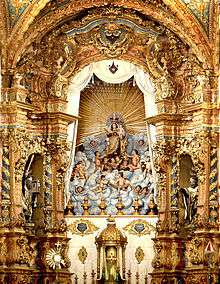Baroque in Brazil

The baroque in Brazil was introduced at the beginning of the seventeenth century by Catholic missionaries, especially Jesuits, who brought the new style as an instrument of Christian indoctrination. The epic poem Prosopopéia (1601), by Bento Teixeira, is one of its initial milestones. The baroque reached its apogee in literature with the poet Gregório de Matos and the holy orator Father António Vieira. The greatest artists of the era were Aleijadinho in sculpture and Master Ataíde in painting. Baroque architecture flourished remarkably in the Northeast; important examples also exist in the center of the country, in Minas Gerais, Goiás, and Rio de Janeiro. In music, unlike the other arts, few documents survive, and only from the late baroque. With the development of neoclassicism starting in the first decades of the nineteenth century, the Baroque tradition, which had a history of massive strength in Brazil and was considered the national style of excellence, gradually fell into disuse, but traces of it were found in various forms of art until the early years of the twentieth century.